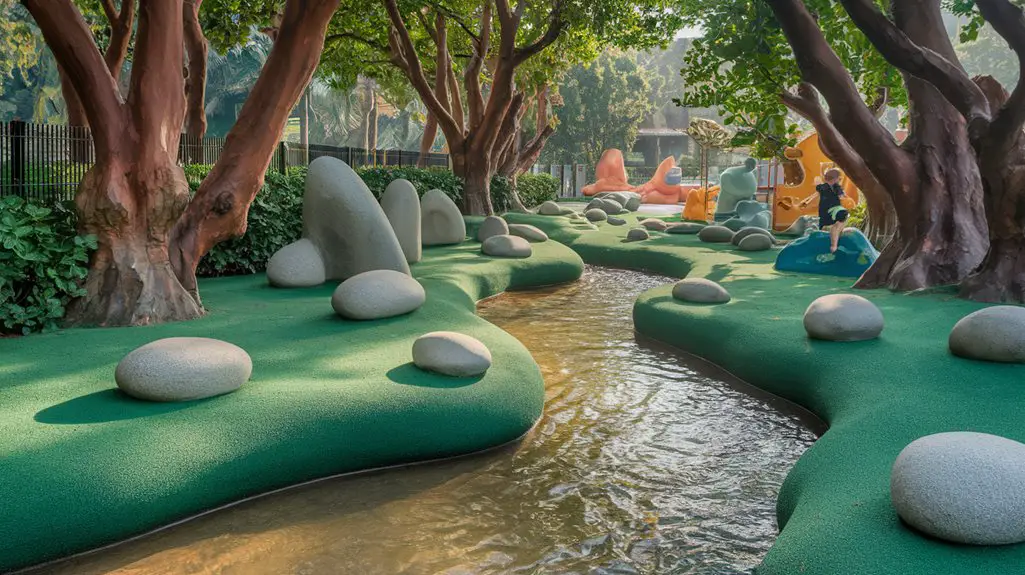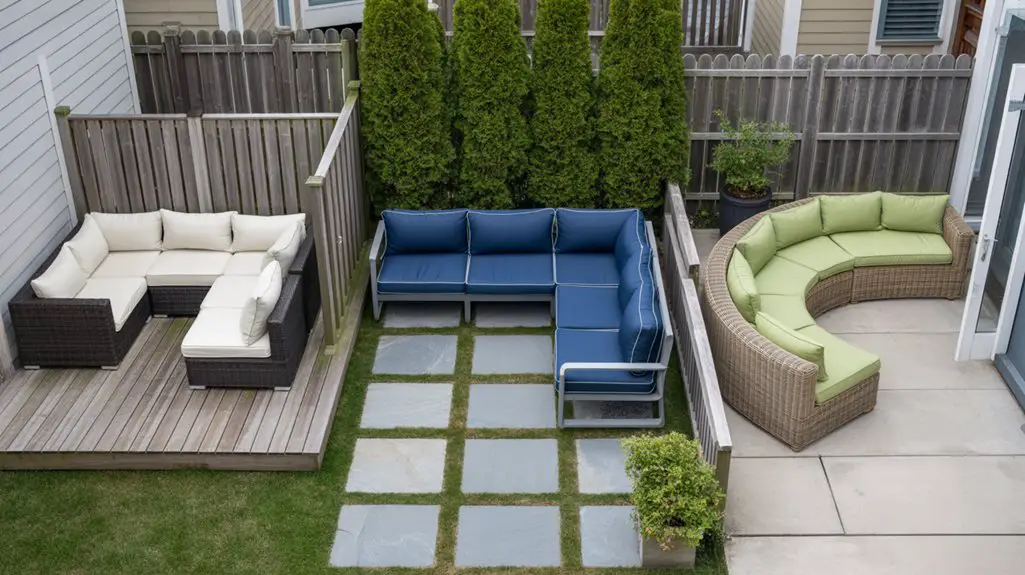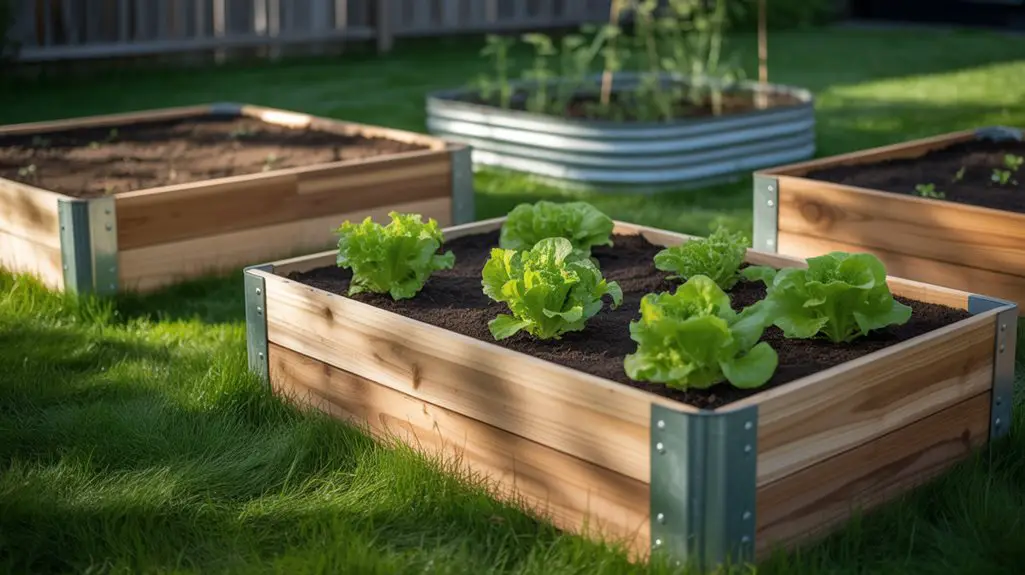When Julie transformed her daycare’s barren backyard into a nature-inspired playground with a babbling brook, log climbers, and herb garden, she noticed an immediate change in children’s behavior. You’ll find that integrating natural elements into play spaces doesn’t just create aesthetically pleasing environments—it fundamentally supports child development. These thoughtfully designed spaces can stimulate creativity, build physical skills, and nurture emotional well-being in ways that manufactured equipment simply cannot match.
Water Features: Streams, Fountains, and Puddle Zones
When designed thoughtfully, water features offer some of the richest sensory experiences in children’s play environments.
Shallow streams with smooth stones invite children to splash, dam, and redirect flow—building early hydraulic engineering concepts while developing fine motor skills.
Fountains that respond to interaction teach cause-and-effect relationships.
Children learn water’s properties as they manipulate spouts, wheels, and pumps, supporting cognitive development through scientific inquiry.
Designated puddle zones with permeable surfaces allow for safe exploration of depth, volume, and containment.
You’ll find these areas particularly valuable during seasonal changes, as children observe freezing, thawing, and evaporation processes firsthand.
For safety, guarantee all water features remain shallow (under 2 inches) with proper drainage and regular maintenance.
The developmental benefits of water play justify the additional planning required. Additionally, creating safe play zones helps minimize risks associated with water features, ensuring a secure environment for children to explore and learn.
Natural Climbing Structures: Boulders, Logs, and Tree Stumps
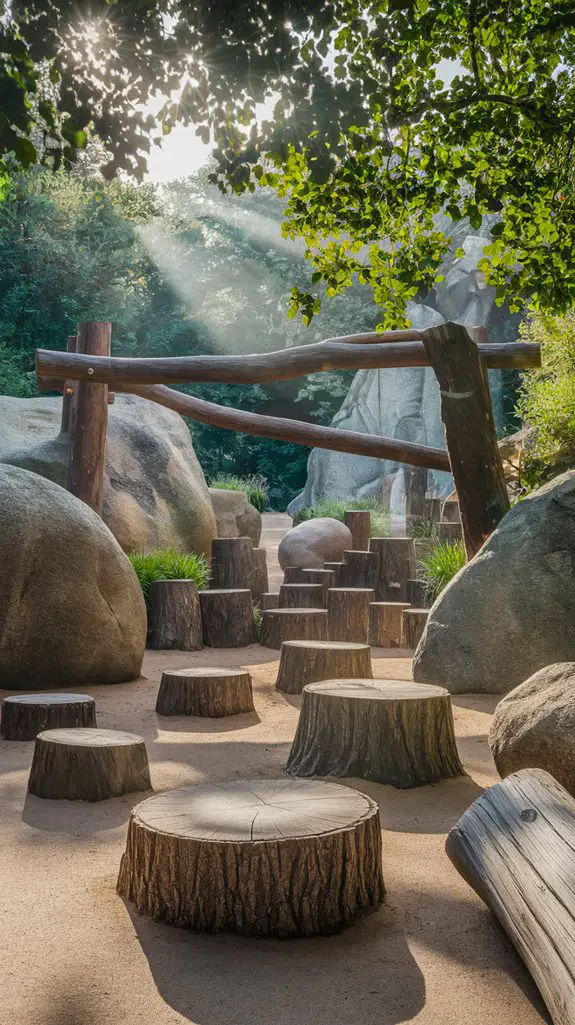
Unlike water features that engage children through fluid exploration, natural climbing structures provide tactile challenges that build whole-body strength and spatial awareness.
When you incorporate boulders, logs, and tree stumps into play areas, you’re offering children varied textures, heights, and degrees of difficulty that synthetic equipment can’t match.
Large, stable boulders with flat surfaces invite climbing while developing problem-solving skills as children navigate routes.
Horizontally placed logs create balance beams that enhance coordination, while vertical logs at different heights encourage stepping and jumping.
Tree stumps arranged in clusters let children practice risk assessment as they hop between surfaces.
These natural elements develop proprioception—children’s sense of body position—while connecting them to authentic materials that change with weather and seasons, creating richer sensory experiences than manufactured alternatives.
Sensory Gardens: Plants, Sand, and Textured Pathways
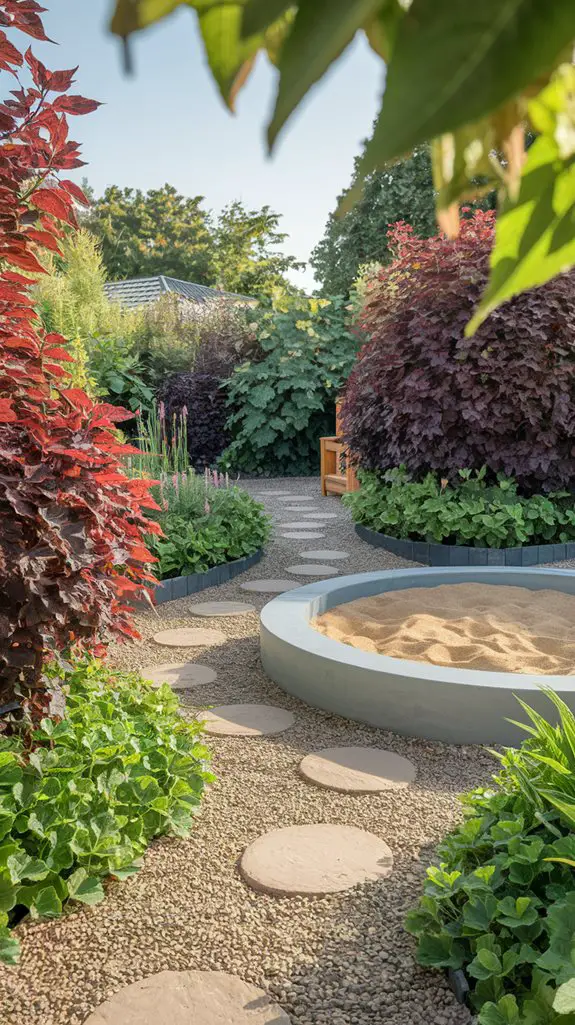
Sensory gardens transform ordinary play spaces into rich multi-sensory environments where children develop cognitive and perceptual skills through natural exploration.
You’ll create opportunities for children to engage all their senses while connecting with nature in meaningful ways.
- Plant diversity – Include aromatic herbs like mint and lavender alongside textured plants such as lamb’s ear and ornamental grasses that invite touch and smell exploration.
- Sand areas – Provide fine and coarse sand options with natural tools for scooping, pouring, and constructing.
- Textured pathways – Alternate surfaces like smooth stones, bark chips, and stepping logs to stimulate tactile awareness through feet.
- Sound elements – Incorporate natural wind chimes, hollow logs for drumming, and grasses that rustle in the breeze to enhance auditory development.
Additionally, incorporating exciting backyard games encourages physical activity and social interaction, making the sensory garden a more dynamic space for children.
Conclusion
As you design your child’s play space, you’ll create an environment where water awakens curiosity, natural structures build confidence, and sensory gardens stimulate imagination. These elements don’t just entertain—they develop critical brain connections, support physical growth, and foster environmental stewardship. When children splash, climb, and explore natural materials, they’re not just playing—they’re laying the foundation for lifelong learning through their own joyful discoveries.

